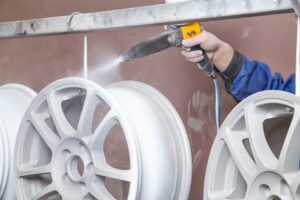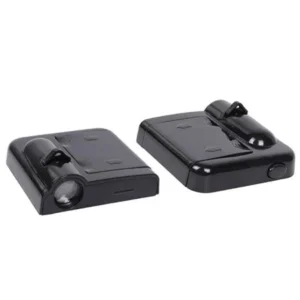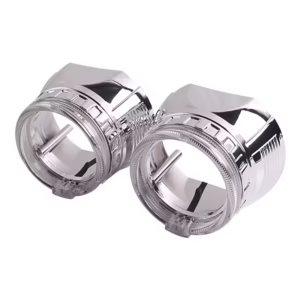Explore the process of powder coating and how it provides a robust, attractive finish to various car and bike parts. Understand why powder coating is superior in terms of durability and aesthetic appeal.
Introduction
Powder coating has become a popular method for finishing automotive parts due to its durability and aesthetic appeal. This guide delves into the process of powder coating, its benefits, and why it stands out as a superior choice for enhancing the durability and appearance of your vehicle.
What is Powder Coating?
Powder coating is a dry finishing process that involves applying a powdered paint to a surface, which is then cured under heat to form a hard, durable layer.
The Powder Coating Process
Surface Preparation: Cleaning and preparing the surface is crucial for optimal adhesion.
Application: The powder is electrostatically charged and sprayed onto the part.
Curing: The part is heated in an oven, causing the powder to melt and form a continuous coating.
Benefits of Powder Coating
Durability: Resistant to chipping, scratching, and fading.
Aesthetic Variety: Available in a wide range of colors and finishes, including matte, glossy, and textured.
Environmental Benefits: Powder coating is free of volatile organic compounds (VOCs) and overspray can be recycled.
Corrosion Resistance: Provides excellent protection against rust and corrosion.
Applications of Powder Coating
Automotive Parts: Wheels, engine components, frames.
Motorcycle Parts: Frames, fenders, handlebars.
Other Uses: Bicycles, outdoor furniture, appliances.
Why Choose Powder Coating Over Traditional Paint?
Longevity: Powder coating lasts longer and requires less maintenance.
Efficiency: The application process is quicker and more efficient than traditional painting methods.
Cost-Effective: Although the initial cost may be higher, the longevity and durability of powder coating make it more cost-effective in the long run.
Powder Coating vs. Ceramic Coating
Application Process: Powder coating is a dry process, while ceramic coating involves applying a liquid polymer.
Durability: Both offer excellent protection, but powder coating is thicker and more resistant to physical damage.
Aesthetic Appeal: Powder coating offers a broader range of colors and finishes.
How to Maintain Powder Coated Surfaces
Regular Cleaning: Use mild soap and water to clean the surface without damaging the coating.
Avoid Harsh Chemicals: Stay away from abrasive cleaners and solvents that can damage the finish.
Inspection: Periodically check for chips or scratches and address them promptly to prevent rust.
Frequently Asked Questions
How long does powder coating last?
With proper care, powder coating can last up to 20 years.
Can powder coating be applied to any material?
Powder coating is typically used on metals, but advances in technology now allow for coating on some plastics and composites.
Is powder coating environmentally friendly?
Yes, powder coating is an eco-friendly option as it produces no VOCs and overspray can be recycled.
Can I repair a damaged powder coating?
Small chips and scratches can be repaired, but extensive damage may require re-coating.
Does powder coating add weight to parts?
Powder coating adds a minimal amount of weight, making it suitable for performance parts.
Is powder coating suitable for high-temperature applications?
Yes, powder coatings are available that can withstand high temperatures, making them ideal for engine components and exhaust parts.
Conclusion
Powder coating is an excellent choice for anyone looking to enhance the durability and appearance of their vehicle’s parts. By understanding the process and benefits, you can make an informed decision about using powder coating for your next project.




